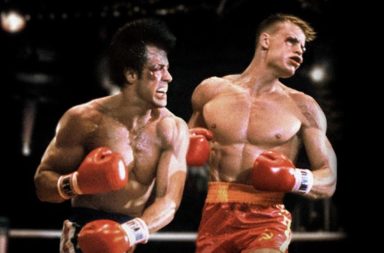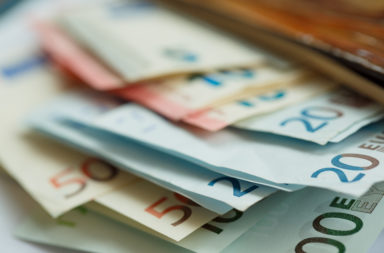Finland is member of the European Union since 1995.
But is it not a member of NATO yet.
As a country with only 5,5 million people in Scandinavia its dominating neighbor is Russia since a long time.
Therefore Finland is sweating next to the big Russian Bear.
It was even a Grand Duchy of Russia from 1809-1917. Finland gained its independence in 1917 because of the Russian revolution.
Before the country was a part of Kingdom of Sweden since 1200’s.
Since 1917 Finland has been a western democracy, and Finland survived against the Soviet Union’s attack during the WWII. London, Moscow and Helsinki were the only capitals in Europe, which were not occupied by other nations, which were engaged in war activities. Suffice to say, Finland and Russia have always been close, and they even have sister-cities (Joensuu, Finland – Petrozavodsk, Russia) with art symbolizing their unity.
During the Cold War Finland practiced neutrality, and it had close trade relations with the Soviet Union.
During the 1980’s the Soviet trade counted over 25 percent of exports. After the collapse of the Eastern Block and the Soviet Union, Finland joined the European Union and the Eurozone. Finland took major steps in western integration during the 1990’s, but at the same Finland created a foundation for eastern trade.
Russia was in internal turmoil in the 1990’s, which made trade a major challenge but bold enterprises headed to the Russian market. In the 2000’s, trade between Finland and Russia increased because Russia’s economical environment gained more stability. Currently, Russia’s economy is in a downfall, which has some similarities to the collapse of the Soviet Union – Finland’s exports were drained. Unstable conditions in Russia are not a new phenomenon in Finland’s long history. The same phenomenon happened when Imperial Russia was demolished by the communist revolution.
Hence, it has always been a some sort of tide with Russia – there are prosperous and stable times but then there are unstable times, diplomatic relations are tense and exports are plummeting.
The Ukrainian crisis has created some diplomatic tensions between Finland and Russia. First it was thought that the Ukrainian crisis would not affect Finland because governments and presidents have always created close relationships with Russian leaders. Airspace violations were seen as “a typical” situation all around Europe.
However, in November 2015, the situation changed quite dramatically because Russia’s border control let asylum seekers to cross the border without any difficulties. Finland was afraid that a vast number of asylum seekers would head towards Finland’s border in order to create chaos. President of Finland Sauli Niinistö met his counterpart President of Russia Vladimir Putin in Moscow, and they signed a new border control treaty, which does not allow other EU-citizens to cross the border in Salla and Raja-Jooseppi, which are located in Northern Finland. Editors and political commentators have said that the new border control agreement is one tool to brake European Union’s unity.
The current situation can be described as problematic because before the crisis situation Finland’s geopolitical situation looked stable and in some ways predictable. Russia’s Prime Minister Dmitri Medvedev said to Finland’s Prime Minister Juha Sipilä that Finland was Russia’s number one trade companion before the crisis. Finland gained lots of prosperity from exports to Russia but now Finland’s geopolitical location does not bring any favors. Russia’s market has heavily plummeted, and Finland has been hit as a result. Finland is currently a prisoner of its geopolitical location. However, in this current situation Finland seems to closer it political relations with Russia, which can mean that Finland’s western relations can wither. Closer relations can mean better diplomatic relations but exports might not benefit.
Someone might ask if Finland’s western relations weaken at the expense of eastern relations? Finland’s former President Juho-Kusti Paasikivi once said that Finland can not do anything about its geopolitical location. This phrase became the cornerstone of Finland’s foreign policy during the Cold War. It meant that Finland has to get along with eastern neighbor. Wise words but Finland can do very little when there are negative tides.
Therefore, Finland has to generate a futuristic grand strategy in order make its geopolitical location a fruitful one, even in bad times. One of the solutions is to promote radical technological innovations in transportation systems, which can free Finland from its geopolitical limitations. Finland is located in the northeast of the Baltic Sea. Finland has ground borders with Sweden and Norway in the north, and a very long border with Russia in the east. However, Finland’s population is heavily concentrated in the South, near the coastline. This means that Finland’s transportation system is heavily dependent on maritime transportation and air services. In contrast to the other Baltic states, Norway and Sweden have ground connections to Central Europe. Land transportation from Sweden and Norway can use the passage through Denmark, and Baltic states are close to Central Europe.
Geostrategist Parag Khanna is a world famous researcher in the fields of connectivity issues. Khanna has argued that increasing connectivity will transform geopolitics, and old geopolitical strategies will become less important. Megacities will become major players in world politics, and countries will become suburbs. Increasing connectivity between human capital, financial capital, transportation systems, advanced technologies, Internet cables, energy pipelines and others will enhance prosperity, peace and stability.
In Finland’s case increasing connectivity will bring more opportunities than threats. The Hyperloop, a high-speed transportation system would allow Southern Finland to have a land transportation system to Sweden and Estonia. It is estimated that travel time between Turku, one of Finland’s largest cities, and Stockholm, capital of Sweden, would be eleven minutes. This would revolutionize Finland’s geopolitical location, hence, Finland would have a land transportation system, which would bring Finland closer to Europe.
Increasing connectivity would allow Finland to be more connected to other member countries of the European Union. Finland’s private sector would be the first stakeholder group to benefit of the new high-speed transportation system because exports would benefit.
It would make Finland less depended on Russia’s export market. Russia’s GDP was over 2000 billion dollars in 2013, which has plummeted to 1200 billion dollars in 2016. Russia’s declining economy has hit Finland hard. Still, Finland has major internal challenges with its economy, and increasing connectivity would be one solution in order to generate economic growth in Finland. At the same time Finland’s geopolitical location would be more flexible.
Khanna’s thesis concerning connectivity issues can be one of the cornerstones of Finland’s foreign and security policy 2.0 in the future. However, this requires disruptive or revolutionary innovations in order to improve Finland’s geopolitical location. The Hyperloop, one of the examples, will require years of product development. Still, if Finland, the land of ex-mobile-phone-giant Nokia, wants to seek a new foreign policy, it should be a radical innovator and adaptor of new technologies.




